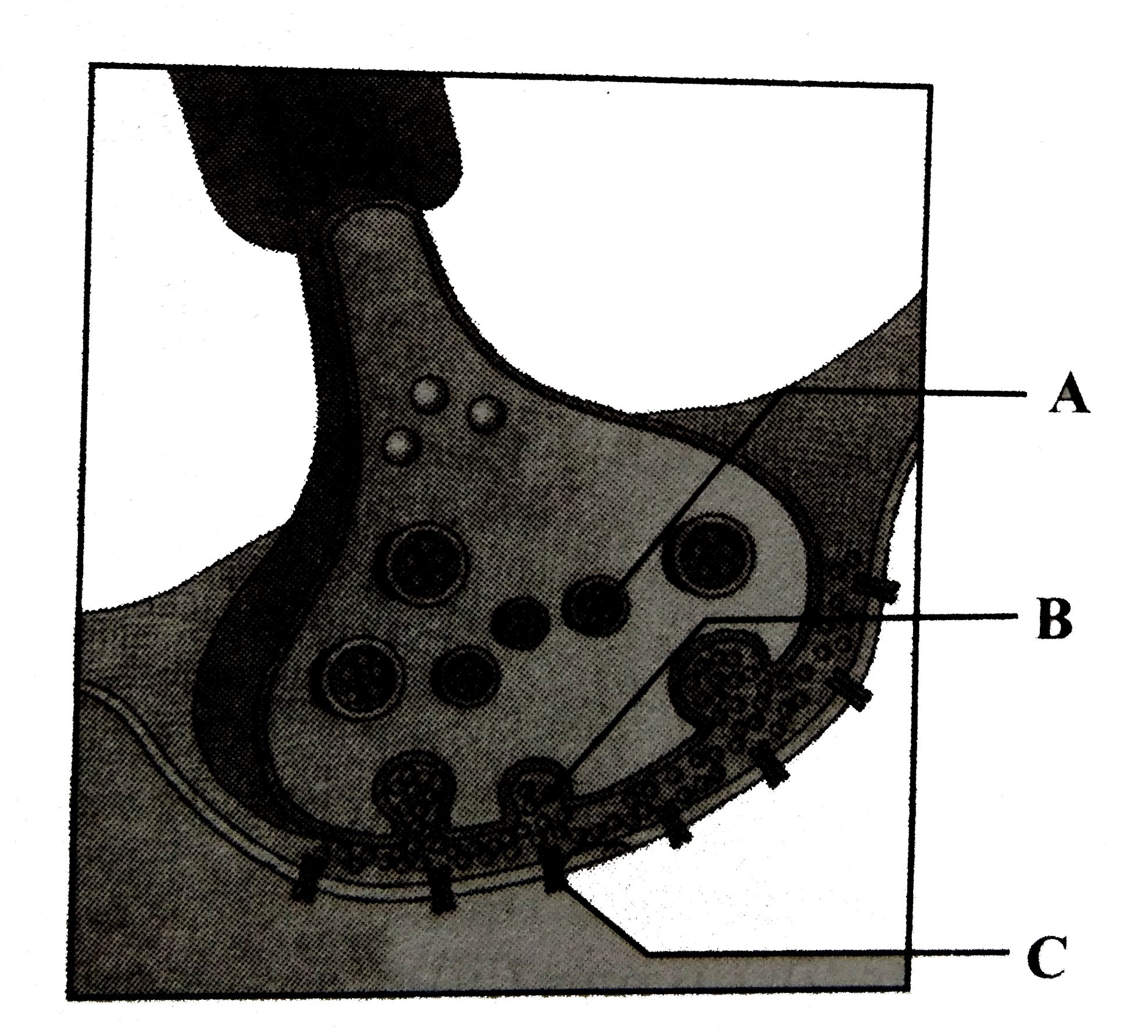[A]: Morphine is most effective analgesic.
[R]: It binds to the post synaptic membrane & blocks the binding of neuro transmitters
If both A and R are true and R is the correct explanation of A
If both A and R are true but R is not the correct explanation of A
If A is true and R is false
If both A and R are false
The correct Answer is:A
Step by step video, text & image solution for [A]: Morphine is most effective analgesic. [R]: It binds to the post synaptic membrane & blocks the binding of neuro transmitters by Biology experts to help you in doubts & scoring excellent marks in Class 12 exams.
Updated on:21/07/2023Topper's Solved these Questions
Similar Questions
Which of the following events is involved in the transfer of information across a chemical synapse?(i) Neurotransmitters bind to the postsynaptic receptors.(ii)Calcium channels open in the presynaptic region.(iii) Ion channels open in the postsynaptic membrane.(iv) Direct flow of ions from one neuron to the next.
View Solutionin electrical synapse, impulse from presynaptic membrane reaches post-synaptic membrane through
View Solution
Knowledge Check
If GABA is released at synapse than it would make post synaptic membrane :-
ADepolarisedBMore negativeCHyperpolarisedDBoth (b) and (c)A list of events occurring in the transmission of nerve impulse across the synapse is given below in a random order
(i)Opening of specific ion channels allows the entry of ions, a new action potential is generated in the post-synaptic neuron.
(ii)Neurotransmitter binds to the receptor on post synaptic membrane.
(iii)Synaptic vesicle fuses with pre-synaptic membrane, neurotransmitter release into synaptic cleft.
(iv)Depolarisation of pre-synaptic membrane.
(v)Arrival of action potential at axon terminal.
Which of the following options represents these events in a correct order ?A(v)→(iv)→(iii)→(ii)→(i)B(i)→(ii)→(iii)→(iv)→(v)C(i)→(ii)→(iv)→(iii)→(v)D(v)→(iv)→(iii)→(i)→(ii)The given diagram shows axon terminal.Select the option that correctly matches the steps in transmission of impulses (list i-vii) with the labellings (A-C) in diagram.

(i)Chemicals called neurotransmitters are released in the synaptic cleft through ion channels.
(ii)When an impulse arrives at the axon terminal, it stimulates the movement of synaptic vesicles.
(iii)Neurotransmitters are endocytosed into the neurons.
(iv)The ions channels close with the binding of neurotransmitters to their specific receptors vesicles.
(v)Synaptic vesicles move towards the membrane where they fuse with the plasma membrane.
(vi)Neurotransmitters are released in the synaptic cleft.
(vii)The released transmitters bind to their specific receptors on post-synaptic membraneAA B C(ii) (iii) (i)BA B C(v) (vi) (iv)CA B C(ii) (vi) (vii)DA B C(v) (iii) (iv)
Which option is correct for conduction of nerve impulse along chemical synapse?
i. At synapse, the membranes of the pre and postsynaptic neurons are separated by a fluid-filled space called synaptic cleft
ii. Chemicals called neurotransmitters are involved in the transmission of impulses at these synapses
iii. The axon terminals contain vesicles filled with these neurotransmitters
iv. When an impulse arrives at the axon terminal, synaptic vesicles release their neurotransmitters in the synaptic cleft.
v. The released neurotransmitters bind to their specific receptors, present on the pre-synaptic membrane.
vi. Opens ion channels allowing the entry of ions which can generate a new potential in the postsynaptic neuron
vii. The new potential developed is only excitatory
View SolutionAxon endings release from ints synaptic vesicles , a neuro-transmitter substance known as
View SolutionWhich of the following statements regarding impulse transmission is incorrect ?
I . Chemicals called neurotransmitters are involved in impulse transmission across the synapses.
II. The membranes of the pre - synaptic and post - synaptic neuron are separated by an empty space called the synaptic cleft.
III. The released neurotransmitters bind to the specific receptors present on the pre - synaptic membrane.
IV. The new potential which develops is always excitatory.
View SolutionRead the following four statements
(A) EPSP develops due to opening of Na+ channels
(B) IPSP develops due to opening of Cl− channels
(C) GABA develops IPSP and Ach develops EPSP.
(D) The new potential developed on post synaptic membrane may be either excitatory or inhibitory.
How many of the above statements are correct?
View SolutionRead the following four statements
(A) EPSP develops due to opening of Na+ channels
(B) IPSP develops due to opening of Cl− channels
(C) GABA develops IPSP and Ach develops EPSP.
(D) The new potential developed on post synaptic membrane may be either excitatory or inhibitory.
How many of the above statements are correct?
View Solution
